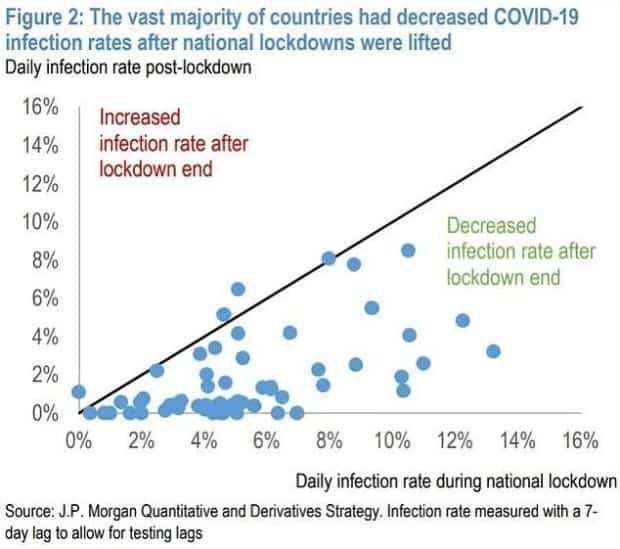1. Lockdowns Saved No One
When we were headed into lockdowns in March — when ironically there was in some ways actually more honesty and sobriety about the disease — nobody suggested they would result in fewer people contracting the infection in the final count.
All that was said was that they would slow down the rate of infection and prevent everyone from falling sick at once, which would supposedly overwhelm the health systems and cause people to die from lack of treatment (including for non-Covid ailments).
However in the event, we never came even close to exhausting hospital capacity. To the contrary, hospitals stood emptier than ever before. This was also true in Sweden which had one of the highest infection rates in the world but never locked down. This is proof enough that voluntary and mild measures would have sufficed to “flatten the curve” (albeit there is no evidence even those were necessary).
In fact, data from UK later indicated that mild and voluntary measures had already drastically reduced transmissions of respiratory infections, not just of coronaviruses but of influenza and pneumonia and others. And that lockdown resulted in only the slightest further gains.

(*Albeit if that is even desirable given that it prevents the maintenance of existing overall levels of societal immunity to the constantly mutating respiratory viruses is questionable.
If you ran wild with “sheltering in place” for an extended period of time, and then re-emerged into the open to face new viruses that few had ever been exposed to, it could precisely result in the scenario where too many fall sick at once, creating a non-manageable curve.)
Finally, even as EU countries and US states emerge from lockdowns, infection rates continue to decline indicating the outbreak was never headed to where 60% of us had been infected, but was always bound to resolve itself naturally much sooner than that.

2. Lockdowns Made Covid Worse
The single biggest factor determining the outcome in heavily-afflicted countries has not been whether they locked down, but to what extent they allowed the virus to get into their care homes.
Spain suffered 17,500 of its 25,000 deaths among its 370,000 care home residents. Germany has 800,000 care home residents but suffered only 8,000 deaths in total.
Ie, Spain had more deaths from its 370,000 care home residents (0.8% of the population) than Germany with a milder and shorter lockdown had in total.
Spain lost 1 out of 20 of its care home residents because the infection rate it allowed in care homes was several times the 5% infection rate among the general population.
In every single country or state with relatively high losses to Covid 50-70% were care home residents.
Locking down the society at large helps care homes only in the most tangential way possible. Instead, it stripped them of the focus and resources they justly deserved.
More than that, as part of the frenzied lockdown policies care homes (in the UK, the US, Spain — and I assume in many other lockdown countries) were forced to take back their Covid-positive residents from hospitals, before their infection had cleared. Most of these patients had not even been sent to hospitals because of Covid but only contracted it there.
The lockdown governments were inadvertently helping to to make sure the virus would reach the most vulnerable segment of the population and result in plenty of deaths. A great deal of them unnecessary ones that would not have happened in normal circumstances — that is without the mad frenzy to quickly clear as many hospital beds as possible for a surge that was never coming.
3. Lockdowns Killed Many More on Top
Aside from making sure more care home residents would die of COVID, government policies resulted in additional collateral damage through other causes.
In the first wave are the people who died needlessly during the lockdown as a result of being denied treatment — or not seeking one out of fear — for heart attacks and strokes.
In India — and presumably some other third world countries — there were also starvation deaths during lockdown.
In the collateral damage second wave are all the people who made it through the lockdown but whom the lockdown has sentenced to an earlier death.
In developed countries these are people who missed their cancer treatments some of whom are going to now die earlier than previously expected, and people who because of cancelled screening are going to have their cancers detected at a later stage influencing their survivability rates.
In undeveloped countries these are people who would otherwise have lived but are now going to die because anti-measels, anti-malaria, and anti-TB campaigns had been held back, and because of additional malnutrition.
These man-made deaths will exceed COVID deaths by several times.

You need to be a member of 12160 Social Network to add comments!
Join 12160 Social Network